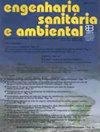Surface water quality in rural communities in the state of Goiás during the dry season and its relationship with land use and occupation
IF 0.5
4区 环境科学与生态学
Q4 WATER RESOURCES
引用次数: 0
Abstract
Abstract Different land uses and occupations can influence water quality and affect the lives of the population, especially of people who live in rural areas. Because rural populations live under conditions of socio-environmental vulnerability, it is necessary to monitor the quality of water resources to prevent diseases. This work aimed to analyze surface water quality in rural and traditional communities in the state of Goiás through the Bascarán Water Quality Index (WQIB) to evaluate the effects of the predominant land use and occupation of each location. Raw water samples were collected from specific points during the dry season. The presence of pesticides was verified through chromatographic analysis, without quantification, and 11 physical-chemical and microbiological parameters were assessed according to standard methods. The results showed that the WQIB ranged in quality from “good” to “pleasant”. Classification as “pleasant” was statistically related to a high incidence of pasture area (> 80%) and classification as “good” with a percentage of agriculture below 30%. The main land uses and occupations were forest, pasture and agriculture. The apparent parameters color, thermotolerant coliforms and dissolved oxygen also indicated contamination of water courses. The detection of pesticides with a high degree of toxicity in the analyzed water resources, mainly in two rivers (the Facada and Sucuapara creeks), put human health at risk in rural areas, even under conditions of small exposure. Carbofuran, banned since 2017, was detected near the Itacaiú community, making it necessary to alert the local government, residents and tourists who use the Araguaia River for different purposes.Goiás州农村社区旱季地表水水质及其与土地利用占用的关系
不同的土地用途和职业可以影响水质,影响人口的生活,特别是生活在农村地区的人。由于农村人口生活在社会环境脆弱的条件下,有必要监测水资源的质量,以预防疾病。本工作旨在通过Bascarán水质指数(WQIB)分析Goiás州农村和传统社区的地表水质量,以评估每个地点的主要土地利用和占用的影响。在旱季从特定地点采集原水样本。通过色谱分析验证农药的存在,不进行定量分析,并根据标准方法评估了11个理化和微生物参数。结果表明,WQIB的质量从“好”到“好”不等。从统计上看,“宜人”与牧场面积高发生率(约80%)相关,而“良好”与农业比例低于30%相关。主要的土地用途和职业是森林、牧场和农业。表观参数颜色、耐热大肠菌群和溶解氧也指示了河道的污染。在分析的水资源中,主要是在两条河流(法卡达河和苏夸帕拉河)中,检测到具有高度毒性的农药,使农村地区的人类健康处于危险之中,即使在少量接触的情况下也是如此。在Itacaiú社区附近发现了自2017年以来被禁止的呋喃,因此有必要提醒当地政府、居民和将阿拉瓜亚河用于不同目的的游客。
本文章由计算机程序翻译,如有差异,请以英文原文为准。
求助全文
约1分钟内获得全文
求助全文
来源期刊

Engenharia Sanitaria E Ambiental
WATER RESOURCES-
CiteScore
0.90
自引率
20.00%
发文量
101
审稿时长
>12 weeks
期刊介绍:
Information not localized
 求助内容:
求助内容: 应助结果提醒方式:
应助结果提醒方式:


